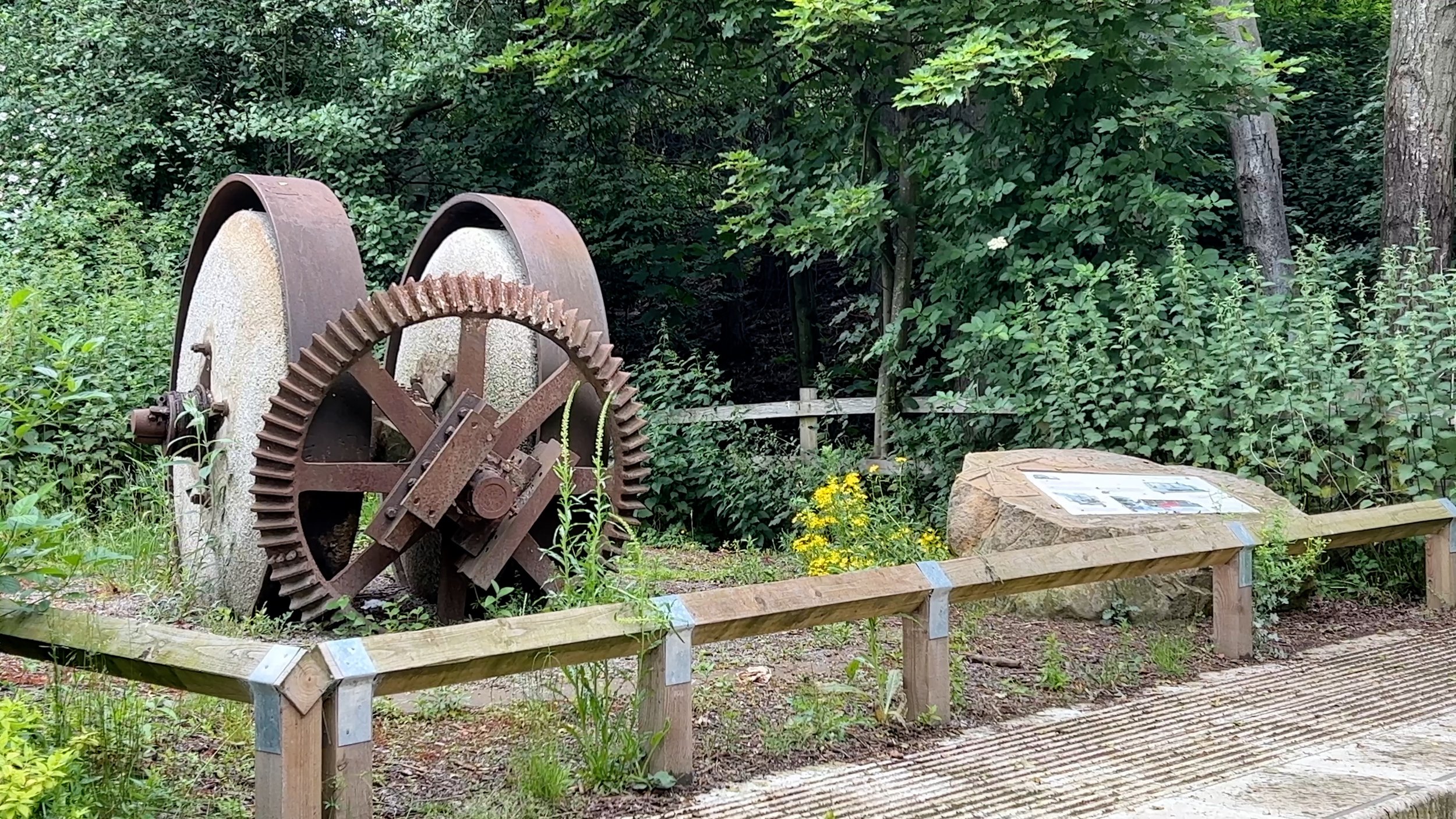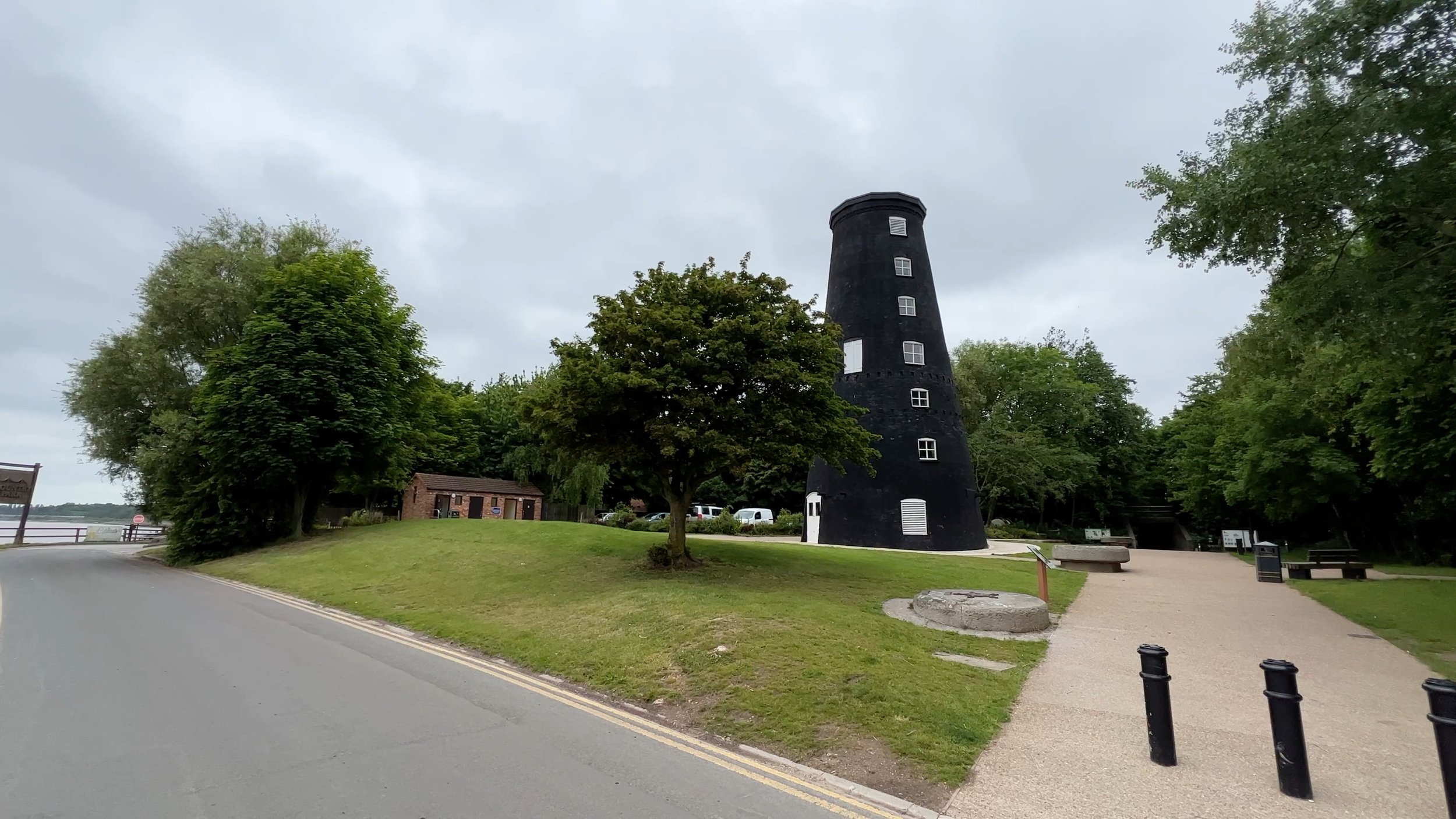
Visit the Humber Bridge
The Humber Bridge is a significant suspension bridge in the United Kingdom, spanning the Humber Estuary between Barton-upon-Humber on the south bank and Hessle on the north bank, near Kingston upon Hull.
Visit the Humber Bridge in the East Riding
-

The Humber Bridge
Visitors are often drawn to the bridge for its impressive structure. Popular activities include:
Walking or cycling across the pedestrian paths.
Photography, especially from the viewing areas which offer panoramic views of the estuary.
Guided tours that provide historical and engineering insights.
-

Humber Bridge Viewing Area Visitor Centre
Located near the bridge, the visitor center provides:
Information about the history and construction of the bridge.
Exhibits and displays about the local area.
Picnic areas and amenities for families.
-

Hessle Foreshore
Situated on the north side of the bridge, this area offers:
Scenic riverside walks.
Birdwatching opportunities.
Access to the Humber Bridge Country Park.
-

The Humber Bridge Country Park
Located on the north bank near Hessle, this 48-acre nature reserve is also known as "Little Switzerland" due to its stunning chalk cliffs. It features:
Woodlands, meadows, and ponds.
Walking and cycling trails.
Wildlife watching opportunities.
-

Local Walks and Trails
The area surrounding the Humber Bridge has numerous walking and cycling routes, such as:
The Trans Pennine Trail, which passes close to the bridge.
The Yorkshire Wolds Way, a National Trail that starts nearby.
These attractions make the Humber Bridge and its surroundings a diverse destination for tourists, combining natural beauty, historical interest, and modern amenities.
-

Hessle Mill
Hessle Mill is a significant historical landmark that offers a glimpse into the region's industrial past. Its location within the beautiful Humber Bridge Country Park makes it a worthwhile destination for visitors interested in history, architecture, and nature.
Humber Bridge in Video
We have produced a video reflecting the Humber Bridge with its engaging things to do and see. To watch the video, please press the play button opposite.
You might want to subscribe to our YouTube channel found at https://youtube.com/@greatyorkshiredayout
We will be producing further videos on an ongoing basis giving you even more inspiration to plan your day out in Yorkshire.
Humber Bridge FAQs
-
The Humber Bridge is located in the United Kingdom, spanning the Humber Estuary in the northeastern part of England. It connects the town of Barton-upon-Humber in North Lincolnshire on the south bank with the village of Hessle in the East Riding of Yorkshire on the north bank. The bridge is situated near the city of Kingston upon Hull (commonly known as Hull), which is approximately 5 miles (8 kilometers) to the east of the bridge. The geographic coordinates of the Humber Bridge are approximately 53.7070° N latitude and 0.4530° W longitude.
-
The Humber Bridge and its surrounding areas offer several popular attractions for visitors. Here are some of the most notable ones:
1. Humber Bridge Country Park
Located on the north bank near Hessle, this 48-acre nature reserve is also known as "Little Switzerland" due to its stunning chalk cliffs. It features:
Woodlands, meadows, and ponds.
Walking and cycling trails.
Wildlife watching opportunities.
2. The Humber Bridge Itself
Visitors are often drawn to the bridge for its impressive structure. Popular activities include:
Walking or cycling across the pedestrian paths.
Photography, especially from the viewing areas which offer panoramic views of the estuary.
Guided tours that provide historical and engineering insights.
3. Humber Bridge Viewing Area and Visitor Centre
Located near the bridge, the visitor center provides:
Information about the history and construction of the bridge.
Exhibits and displays about the local area.
Picnic areas and amenities for families.
4. Hessle Foreshore
Situated on the north side of the bridge, this area offers:
Scenic riverside walks.
Birdwatching opportunities.
Access to the Humber Bridge Country Park.
5. Waters' Edge Country Park and Visitor Centre
Located on the south bank in Barton-upon-Humber, this park features:
Wetlands and wildlife habitats.
Interactive exhibits about the local environment.
Café and play areas for children.
6. Barton-upon-Humber
This historic town on the south side of the bridge offers:
The Ropewalk, a regional centre for the arts and entertainment housed in a former rope factory.
Baysgarth House Museum, which explores local history and heritage.
St. Peter's Church, known for its Anglo-Saxon tower and archaeological significance.
7. The Deep
Although not directly next to the Humber Bridge, The Deep in nearby Hull is a world-class aquarium that is worth visiting:
Home to thousands of marine creatures, including sharks and rays.
Interactive exhibits and educational programs.
Stunning architecture and design.
8. Hull City Attractions
Kingston upon Hull offers several attractions within a short drive from the Humber Bridge:
Hull Marina and the Humber Street Gallery.
The Museums Quarter, featuring Wilberforce House, the Hull and East Riding Museum, and the Streetlife Museum of Transport.
The historic Old Town with its cobbled streets and historic buildings.
9. Local Walks and Trails
The area surrounding the Humber Bridge has numerous walking and cycling routes, such as:
The Trans Pennine Trail, which passes close to the bridge.
The Yorkshire Wolds Way, a National Trail that starts nearby.
These attractions make the Humber Bridge and its surroundings a diverse destination for tourists, combining natural beauty, historical interest, and modern amenities.
-
Yes, the Humber Bridge and its surrounding areas are generally dog-friendly, making it a great destination for dog owners. Here are some specifics about bringing your dog to the Humber Bridge and nearby attractions:
Humber Bridge
Walking Across the Bridge: Dogs are allowed on the pedestrian walkways of the Humber Bridge. It's a great opportunity for both exercise and taking in the views. Ensure your dog is on a leash for safety.
Humber Bridge Country Park
Dog-Friendly Areas: Dogs are welcome in the Humber Bridge Country Park. The park offers various walking trails where dogs can enjoy the natural surroundings.
Leash Rules: Dogs should be kept on a leash, especially in areas with wildlife or where other visitors are present.
Hessle Foreshore
Riverside Walks: The foreshore is another excellent place for walking dogs, with scenic views of the river and bridge.
Leash Rules: Similar to the country park, it’s recommended to keep dogs on a leash, particularly near the water and in busier areas.
Waters' Edge Country Park and Visitor Centre
Dog-Friendly Facilities: Dogs are allowed in the country park. There are ample walking trails and open spaces for dogs to explore.
Visitor Centre: While dogs might not be allowed inside the visitor center itself, the surrounding park area is very accommodating.
Barton-upon-Humber
Town Exploration: Barton-upon-Humber is a dog-friendly town with many outdoor areas where dogs are welcome.
Ropewalk: The arts and entertainment venue often has outdoor events and spaces where dogs are allowed.
General Tips for Dog Owners
Waste Disposal: Always clean up after your dog to keep the areas pleasant for all visitors.
Water: Bring water for your dog, especially on long walks or warm days.
Behavior: Ensure your dog is well-behaved around other people and animals.
Overall, the Humber Bridge and its surrounding areas provide plenty of opportunities for enjoyable outings with your dog.
-
Yes, the Humber Bridge and its surrounding areas are generally suitable for individuals with poor mobility, but there are some considerations and facilities to be aware of:
Humber Bridge
Pedestrian Walkways: The bridge has pedestrian walkways on both sides that are relatively flat and accessible. However, the distance across the bridge is about 2.22 kilometers (1.38 miles) one way, which might be challenging for some.
Access Points: The access points to the pedestrian walkways are typically accessible, but it's advisable to check for the most convenient access route depending on the starting point.
Humber Bridge Country Park
Paths and Trails: The country park offers a variety of trails, some of which are wheelchair accessible and suitable for those with poor mobility. There are both paved and natural paths.
Facilities: There are accessible facilities, including toilets, in the country park. The visitor center staff can provide information on the most suitable routes for those with mobility issues.
Hessle Foreshore
Walkways: The foreshore has pathways that are generally flat and suitable for wheelchairs and mobility scooters.
Parking: Accessible parking spaces are available close to the foreshore, making it easier to access the area.
Waters' Edge Country Park and Visitor Centre
Accessibility: This park is designed to be accessible, with flat, well-maintained paths suitable for wheelchairs and mobility scooters.
Visitor Centre: The visitor center is equipped with accessible facilities, including ramps and accessible toilets.
Barton-upon-Humber
Town Accessibility: Barton-upon-Humber is relatively accessible, with many pavements and paths suitable for those with poor mobility.
Ropewalk: This venue is wheelchair accessible and often accommodates visitors with mobility challenges.
General Tips
Planning: Plan your visit ahead of time to ensure you know the most accessible routes and facilities.
Companions: If possible, visit with a companion who can assist with any unexpected challenges.
Rest Areas: Look for rest areas along the routes if you need to take breaks.
Overall, the Humber Bridge and its surrounding attractions are reasonably accessible to those with poor mobility, with facilities and pathways designed to accommodate a range of mobility needs.
-
History and Construction
Construction Start: Construction of the Humber Bridge began in July 1972.
Completion and Opening: The bridge was completed in 1981 and opened to traffic on June 24, 1981, by Queen Elizabeth II.
Purpose: It was built to improve transportation links between the East Riding of Yorkshire and North Lincolnshire, stimulating economic growth and development in the region.
Design and Specifications
Type: The Humber Bridge is a suspension bridge.
Total Length: The bridge is 2,220 meters (7,280 feet) long.
Main Span: Its main span, measuring 1,410 meters (4,626 feet), was the longest in the world at the time of its completion. It remained the longest single-span suspension bridge until 1998 and is currently the 11th longest.
Height: The bridge's towers rise to a height of 155.5 meters (510 feet) above the road deck.
Deck Width: The deck is wide enough to carry a four-lane road with pedestrian walkways on both sides.
Engineering and Design
Designers: The bridge was designed by Freeman Fox & Partners, with Sir Ralph Freeman being a notable figure in its design.
Construction Techniques: Innovative techniques were used in its construction, such as spinning the main cables on site. The bridge's design also accounted for the region's challenging environmental conditions, including high winds and the shifting bed of the Humber Estuary.
Economic and Social Impact
Toll Bridge: The Humber Bridge operates as a toll bridge, with fees collected for both vehicle and pedestrian traffic to help cover maintenance and operational costs.
Regional Importance: It has significantly reduced travel time between the north and south banks of the Humber, fostering economic connections and opportunities.
Tourist Attraction: The bridge is also a local landmark and tourist attraction, drawing visitors interested in its architectural and engineering significance.
Maintenance and Upgrades
Ongoing Maintenance: Like all major infrastructure, the Humber Bridge requires ongoing maintenance to ensure its structural integrity and safety.
Recent Upgrades: There have been various upgrades and refurbishments over the years to modernize the bridge and extend its lifespan, including work on the bridge deck, cables, and safety systems.
Overall, the Humber Bridge stands as an engineering marvel and an iconic symbol of the region, representing a blend of practical infrastructure and impressive architectural achievement.
-
Hessle Mill, also known as Whiting Mill, is a historic windmill located in the village of Hessle, East Riding of Yorkshire, near the northern end of the Humber Bridge. Here are some key details about Hessle Mill:
History
Construction: Hessle Mill was originally built in 1810.
Function: The mill was primarily used for grinding chalk into whiting, a fine white powder used in various industrial applications, including putty, paint, and whitewash.
Operation: The mill was in operation throughout the 19th century and into the early 20th century. It was powered by wind, utilizing its large sails to drive the grinding machinery inside.
Decline: With the advent of modern industrial processes and machinery, the need for traditional wind-powered mills declined, leading to the cessation of operations at Hessle Mill in the early 20th century.
Restoration
Preservation Efforts: Recognizing its historical and architectural significance, efforts were made to preserve and restore the mill.
Restoration Work: Extensive restoration work has been undertaken to restore the mill to its former glory. This has included repairing the structure, restoring the sails, and maintaining the machinery inside.
Heritage Site: The mill is now a listed building, signifying its importance as a piece of local heritage and industrial history.
Current Status
Public Access: Hessle Mill is situated within the Humber Bridge Country Park, making it accessible to visitors. The park itself offers a range of amenities and natural attractions, enhancing the visitor experience.
Educational Value: The mill serves as an educational site, providing insights into the history of industrial processes in the region. Informational displays and guided tours are often available to help visitors understand the mill's historical context and operation.
Scenic Location: The mill is located in a picturesque setting, with views of the Humber Bridge and the surrounding countryside. This makes it a popular spot for both history enthusiasts and those looking for a scenic outing.
Visiting Hessle Mill
Location: Hessle Mill is located in the Humber Bridge Country Park, near the village of Hessle, East Riding of Yorkshire. The park is easily accessible from the A63 and is well-signposted.
Parking: There are parking facilities available within the country park, providing convenient access to the mill and other attractions.
Walking Trails: The mill can be reached via several walking trails that meander through the country park, offering an enjoyable way to explore the area.
Events: Occasionally, special events and open days are held at the mill, providing additional opportunities for visitors to engage with the site and learn more about its history.
Our Review of the Humber Bridge Based on Our Visit
We understand your hesitation; the prospect of exploring a bridge supporting a bustling highway might not initially pique your interest. However, once you set your eyes on this massive structure, you will be awestruck by its sheer magnitude and elegant design.
However, this unique structure may not be suitable for everyone due to its significant height. While the views from the eastern and western paths are breathtaking, the elevation might be challenging for individuals with acrophobia. For those who are uncomfortable with heights, it is advisable to explore the surroundings at ground level. Despite this caution, the perception of height varies when peering over the land compared to gazing at the water below. Visitors can enjoy magnificent bird's-eye views encompassing sea-faring vessels, the historic Hessle Mill, and the picturesque Humber Estuary.
When we arrived at the location, we were disappointed to find that the west path was currently closed to visitors. However, on regular days when the path is open, visitors have the option to walk along one side and return on the other, allowing them to enjoy stunning views from both sides of the bridge. Opting for the left path provides a picturesque vista overlooking the bustling port of Kingston upon Hull, offering a chance to catch a glimpse of ferries crossing the waters in the distance.
The area offers more than just the iconic Humber Bridge. Visitors can explore a historic former mill and enjoy a leisurely stroll along The Chalk Walk trail within the picturesque Humber Bridge Country Park.
You have a few options for transportation to reach the Humber Bridge. You can choose to travel by train, bus, or car. Conveniently, there are car parks available at both ends of the bridge, and there are facilities located at the Hessle (northern) end for your convenience. If you opt for taking the train, it is recommended to head to Hessle Station, which is just a brief walk away from the Humber Bridge. Alternatively, if you prefer using the bus, you can make your way to Hull Interchange and catch the no.350 bus that stops at the country park.
There are pleasant paths lining both shores of the picturesque Humber Estuary waiting to be explored, offering stunning views of the waterside scenery and the diverse range of wildlife that calls this area home.
Hull is just a stone's throw away, providing ample opportunities to explore. You can discover popular attractions like the Street Life Museum, East Riding Museum, and The Deep, all of which are must-visits in Hull. Additionally, the Maritime Museum has recently undergone renovations and is set to reopen its doors to visitors in the near future.
We had a fantastic time exploring the iconic Humber Bridge during our visit and wholeheartedly recommend it to others looking for a memorable experience in Yorkshire!
Getting to the Humber Bridge in the East Riding
-
From the North (Hull and East Riding of Yorkshire):
Take the A63 westbound from Hull. The A63 leads directly to the Humber Bridge access road.
Follow signs for the Humber Bridge and then for the visitor parking areas.
From the South (North Lincolnshire and Beyond):
Take the A15 northbound towards Barton-upon-Humber.
Follow signs for the Humber Bridge, which will take you to the bridge's southern approach.
Parking: There are parking areas near the bridge on both the north and south sides. The Humber Bridge Country Park on the north side and the Waters' Edge Country Park on the south side offer parking facilities.
-
From Hull: Several bus services run from Hull to the Humber Bridge. Look for services that stop at Hessle or the Humber Bridge Country Park.
From Barton-upon-Humber: Buses also run from Barton-upon-Humber to the bridge, with stops near the southern end of the bridge.
Local bus companies such as East Yorkshire (the no.350) and Stagecoach provide these services. Check their schedules for the most convenient times and routes.
-
To Hessle: Hessle train station is the closest railway station on the north side. From the station, it is a short taxi ride or a walk to the bridge. You can board services from Leeds, Selby and York.
To Barton-upon-Humber: Barton-upon-Humber train station is the closest on the south side. From the station, you can take a taxi or a bus to the bridge.
Train services to Hessle and Barton-upon-Humber are operated by Northern Rail.
Transpennine Express (from Leeds)
Hull Trains (from London, Doncaster)






